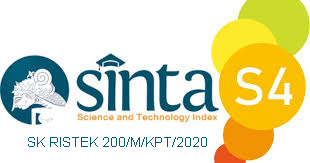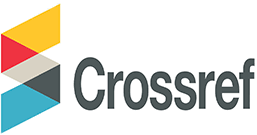Online System on Monitoring and Feedback for Education
Abstract
This study reported the staging of process on developing a mobile application for real-time data management information system on monitoring and feedback in early childhood education, it can help tracking child care and education and assist teacher in monitoring and feedback on child services. A study was carried out to gather necessary information through data mapping, in-depth interviews with key stakeholders, document reviews, application development, direct entry in the field using mobile development, application testing and analysis that was conducted on for 253 respondents. To obtain a full picture on early childhood education, data on child growth and education shall be mapped and linked in one application. We introduce a mobile app to systematically compile the individual as well as group data across different aspects of child life, ranging from child education. Using a tablet PC or mobile phone, data could be easily entered at any time by the person. Due to still poor infrastructure at the grass root level, the system also allows a safety store offline that could automatically link to server when network connection is available. The immediate data entry will provide real-time data report that could be accessed by any relevant stakeholders at any levels to response accordingly. However, to avoid misuse of data, the access will also be restricted with a secured login system. Based on the study, this application is easily applicable for real-time monitoring and evaluation on early child education.
Keywords
Full Text:
PDFReferences
Abubakar A, Holding P, Van Baar A, Newon CRJC and Van de Vijver FJR (2008). Monitoring psychomotor development in a resource limited setting: and evaluation of the Kilifi Developmental Inventory. Annals of Tropical Pediatrics: International Child Health, 28 (3), 217-226.
Abubakar A, Holding P, van de Vijver F J, Bomu G, Van Baar A. (2010) Developmental monitoring using caregiver reports in a resource-limited settting: the case of Kilifi, Kenya. Acta Pediatr 99:29.
Achenbach, T M and Edelbrock CS (2001). Child behavior checklist. Burlington, VT
Bayley, N (2006). Bayleys Scales of Infant and Toddler Development 3rd Edition (Bayleys III). The Psychological Corporation, San Antonio, TX
Carter AS, Briggs-Gowan MJ, Jones SM and Little TD (2003). The infant-toddler social and emotional assessment (ITSEA): Factor structure, reliability, and validity. Journal of abnormal child psychology. 31(5). 495-514.
Gartstein MA and Rothbart MK (2003). Studying infant temperament via the revised infant behavior questionnaire. Infant Behavior and Development, 26(1): 64-68.
Jaramillo, A. and A. Mingat. (2003). Early Childhood Care and Education in Sub-Saharan Africa: What would it take to meet the Dakar goal? The World Bank: Africa Region.
Kochanska G, Murray KT and Harlan, ET (2000). Effortful control in early childhood: Continuity and change, antecedents, and implications for social development. Developmental psychology, 36(2), 220-232.
Newnham CA, Milgrom J, Skouteris H. Effectiveness of a modified Mother-Infant Transaction Program on outcomes for preterm infants from 3 to 24 months of age. Infant Behav Dev. 2009 Jan;32(1):17-26.
Peacock S, Konrad S, Watson E, Nickel D, Muhajarine N (2013) Effectiveness of home visiting programs on child outcomes: a systematic review, BMC Public Health 13:1728
Prado EL, Alcock KJ, Muadz H, Ullman MT, Shankar AH, for the SUMMIT Study Group. (2012) Maternal multiple micronutrient supplements and child cognition: a randomized trial in Indonesia. Pediatrics 130:e536–e546.
Prado EL, Ullman MT, Muadz H, Alcock KJ, Shankar AH, for the SUMMIT Study Group. (2012). The effect of maternal multiple micronutrient supplementation on cognition and mood during pregnancy and postpartum in Indonesia: a randomized trial. PLoS One 7:e32519.
Shonkoff, J.P., & Phillips, D. (Eds.) (2000). From neurons to neighborhoods: The science of early childhood development. Committee on Integrating the Science of Early Childhood Development. Washington, DC: National Academy Press.
Stipek, D.(2004). The early childhood classroom observation measure. Unpublished manuscript, Stanford University.
Smith LB and Thelen E (2003). Development as a dynamic system. Trends in cognitive sciences, 7(8), 343-348.
Squires J and Bricker D (2009). Ages and Stages Questionnaires, Third Edition (ASQ-3). Baltimore, MD: Brookes Publishing
Walker SP, Wachs TD, Grantham-McGregor S, Black MM, Nelson CA, Huffman SL,Baker-Henningham H, Chang SM, Hamadani JD, Lozoff B , Meeks-Gardner JM, Powell CA, Rahman A, Richter L (2011)Inequality in early childhood: risk and protective factors for early child development. Lancet. 378: 1325–38.
Shankar AH, Jahari AB, Sebayang SK, Aditiawarman, Apriatni M, Harefa B, Muadz H, Soesbandoro SD, Tjiong R, Fachry A, Shankar AV, Atmarita, Prihatini S, Sofia G. (2008) Effect of maternal multiple micronutrient supplementation on fetal loss and infant death in Indonesia: a double-blind cluster-randomised trial. Lancet. 371:215-27.
Shankar AV, Zaitu A, Kadha JK, Sebayang SK, Apriatni M, Sulastri A, Sunarsih E, Shankar AH. (2009) Programmatic effects of a large scale multiple micronutrient supplementation trial in Indonesia: using community facilitators as intermediaries for behavior change. Food Nutr Bull. 30:S207-S214.
Zurovac D, Otieno G, Kigen S, Mbithi AM, Muturi A, Snow RW, et al. Ownership and use of mobile phones among health workers, caregivers of sick children and adult patients in Kenya: cross-sectional national survey. Global. Health. 2013;9(20). 2.
Labrique A. Where there is no “mHealth”: Mobile Phone Ownership and Use in Rural Bangladesh. mHealth Summit 2012 [Internet]. Washington DC Area; 2012. Available from: http://www.mhealthsummit.org/sites/default/files/Research - Maternal and Child Health.pdf
DOI: https://doi.org/10.31326/jisa.v4i1.900
Refbacks
- There are currently no refbacks.
Copyright (c) 2021 Sudirman Sudirman

This work is licensed under a Creative Commons Attribution-ShareAlike 4.0 International License.
JOURNAL IDENTITY
Journal Name: JISA (Jurnal Informatika dan Sains)
e-ISSN: 2614-8404, p-ISSN: 2776-3234
Publisher: Program Studi Teknik Informatika Universitas Trilogi
Publication Schedule: June and December
Language: English
APC: The Journal Charges Fees for Publishing
Indexing: EBSCO , DOAJ, Google Scholar, Arsip Relawan Jurnal Indonesia, Directory of Research Journals Indexing, Index Copernicus International, PKP Index, Science and Technology Index (SINTA, S4) , Garuda Index
OAI address: http://trilogi.ac.id/journal/ks/index.php/JISA/oai
Contact: jisa@trilogi.ac.id
Sponsored by: DOI – Digital Object Identifier Crossref, Universitas Trilogi
In Collaboration With: Indonesian Artificial Intelligent Ecosystem(IAIE), Relawan Jurnal Indonesia, Jurnal Teknologi dan Sistem Komputer (JTSiskom)
JISA (Jurnal Informatika dan Sains) is Published by Program Studi Teknik Informatika, Universitas Trilogi under Creative Commons Attribution-ShareAlike 4.0 International License.


















